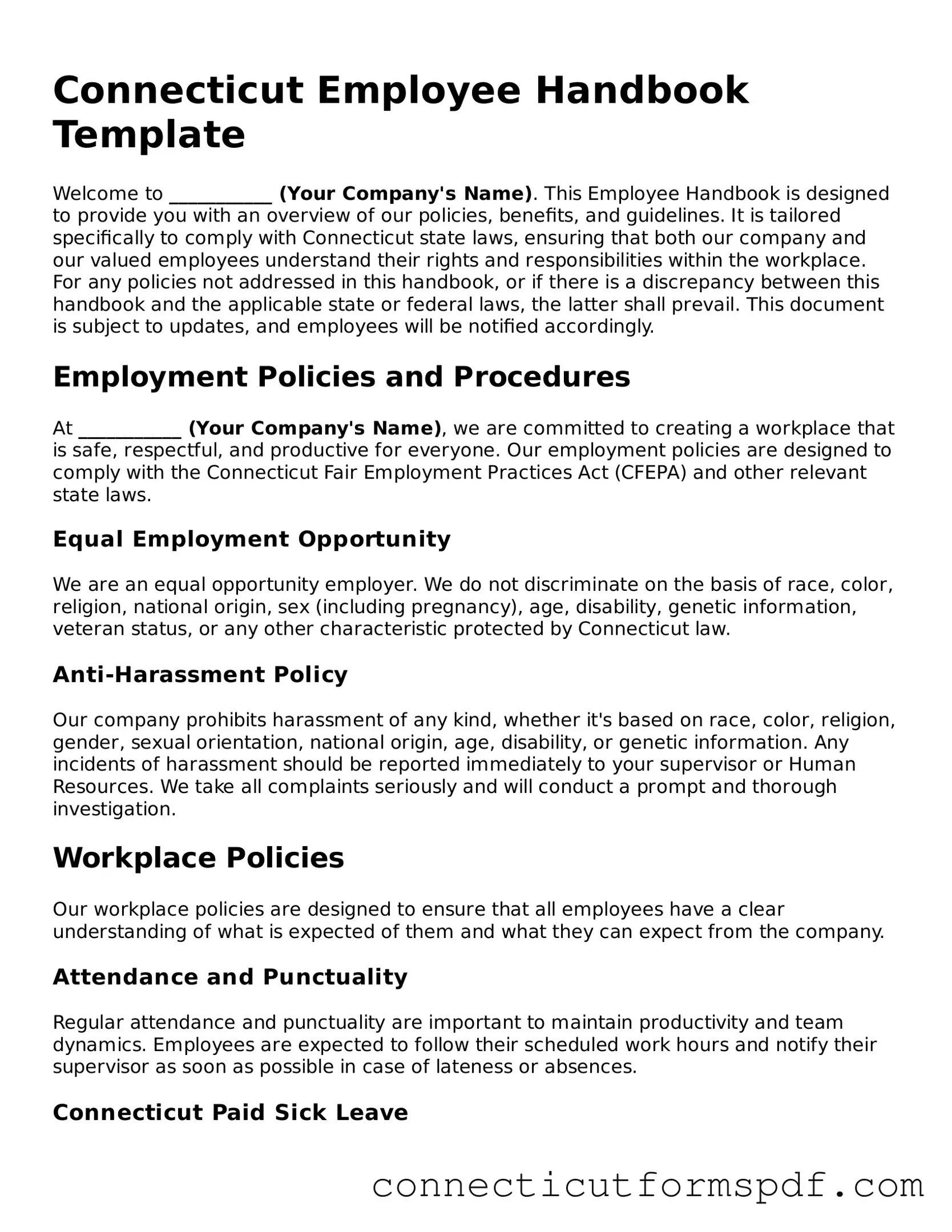Connecticut Employee Handbook Template
Welcome to ___________ (Your Company's Name). This Employee Handbook is designed to provide you with an overview of our policies, benefits, and guidelines. It is tailored specifically to comply with Connecticut state laws, ensuring that both our company and our valued employees understand their rights and responsibilities within the workplace. For any policies not addressed in this handbook, or if there is a discrepancy between this handbook and the applicable state or federal laws, the latter shall prevail. This document is subject to updates, and employees will be notified accordingly.
Employment Policies and Procedures
At ___________ (Your Company's Name), we are committed to creating a workplace that is safe, respectful, and productive for everyone. Our employment policies are designed to comply with the Connecticut Fair Employment Practices Act (CFEPA) and other relevant state laws.
Equal Employment Opportunity
We are an equal opportunity employer. We do not discriminate on the basis of race, color, religion, national origin, sex (including pregnancy), age, disability, genetic information, veteran status, or any other characteristic protected by Connecticut law.
Anti-Harassment Policy
Our company prohibits harassment of any kind, whether it's based on race, color, religion, gender, sexual orientation, national origin, age, disability, or genetic information. Any incidents of harassment should be reported immediately to your supervisor or Human Resources. We take all complaints seriously and will conduct a prompt and thorough investigation.
Workplace Policies
Our workplace policies are designed to ensure that all employees have a clear understanding of what is expected of them and what they can expect from the company.
Attendance and Punctuality
Regular attendance and punctuality are important to maintain productivity and team dynamics. Employees are expected to follow their scheduled work hours and notify their supervisor as soon as possible in case of lateness or absences.
Connecticut Paid Sick Leave
In accordance with the Connecticut Paid Sick Leave Act, eligible employees can accrue and use paid sick leave for certain conditions and situations detailed in the Act. Please refer to our specific policy on sick leave accrual, usage, and notification requirements.
Benefits and Compensation
Our company offers a range of benefits to eligible employees, including health insurance, retirement plans, and paid time off. Specific details regarding eligibility, enrollment, and plan provisions are provided during the orientation process and are available from the Human Resources department.
Health and Safety
We prioritize the health and safety of our employees. In compliance with the Connecticut Occupational Safety and Health Act (CONN-OSHA), we have implemented comprehensive health and safety policies to prevent workplace injuries and illnesses. Employees are required to follow all safety guidelines and report any unsafe conditions to a supervisor.
Acknowledgment
Each employee is responsible for reading and understanding the policies outlined in this handbook. By remaining employed at ___________ (Your Company's Name), you acknowledge that you have received, read, and understand these policies and agree to adhere to them.
